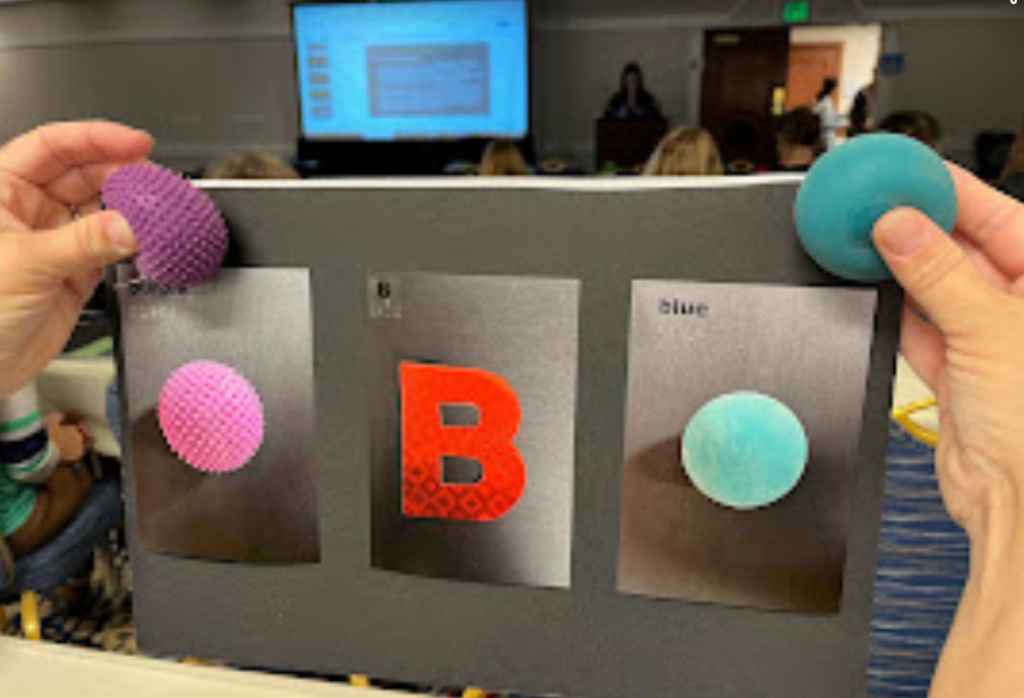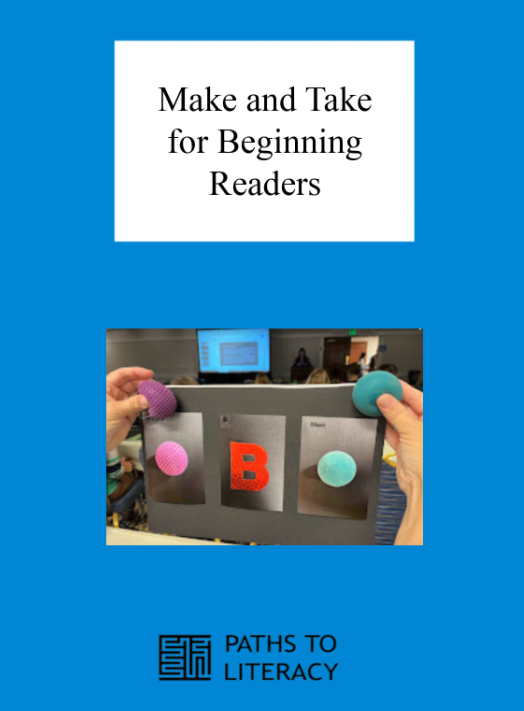The Getting in Touch With Literacy 2023 Conference in St. Pete, Florida was a collection of many of the best and brightest in the vision field. With so many sessions and collaboration it is a true highlight to be a part of it as a TVI (teacher of the visually impaired). Dr. Nicole Johnson and Lisha Yochimowitz put together a full day “make and take” with a focus on brain based visual impairments, CVI (cortical/cerebral vision impairment).
Primary Learning Objectives
The objectives were designed around the latest research and evidence based teaching practices. Participants learned specific strategies, easy to make tools, and created their own file folder activities for these specific literacy-based needs. To support these strategies we used the Perkins CVI Now website as a guide.
Adaptions for low vision and blind students were included in the discussion as well as materials with the option to include braille in the adaptations.

This article provides tips on what materials to have on hand when working with children with CVI (cortical / cerebral visual impairment).
Ideas:
There’s no such thing as a non-reader! Reading Readiness Checklist and Pre-Reading Skills



Does the student need objects, real pictures, and/or highlighted salient features?
Matching cards, tracking book/papers, flashcards, font sizes, file folder games, felt boards, number lines, sentence strips/math strips, adapting books, adding tactual cues, using puffy paint to provide texture, sensory bins, solid backgrounds and more can be utilized to help the student.
Building Literacy Skills for Pre-Readers
- Print motivation
- Direction
- Motor skills
- Print awareness
- Rhyming and phonological Aawareness
- Letter knowledge
- Matching
- Narrative skills
- Vocabulary
File Folder Learning for the Blind and Visually Impaired
File folder activities are an impactful and compact way to work on necessary skills with students. They are an inexpensive way to provide adapted materials to students for specific learning goals.
Bubble letters and sight words for students with low vision, CVI, and complex needs
Note: Don’t over use word bubbling, sometimes all you need to do is underline the word.
Introducing pictures for our students with CVI and multiple needs
ABC scanning for our students with visual impairments, including CVI
Matching with CVI and low vision considerations in place, including directional cues
Math basics with simple materials
Additional Resources
Ideas from a conference in Oregon, article written by Claudia Swapp
Diane Sheline’s website full of ideas and resources.
Our goal is to create tools that work for all learners to support their success in education and beyond. From specially crafted books and materials to universally designed tools, we’ve curated a list to support the learners with cerebral/cortical visual impairments (CVI) in your classroom.
Keep learning
Having the opportunity to collaborate and take the time to create materials keeps us motivated to do more and never stop learning from our peers and students. Share your ideas with us.





